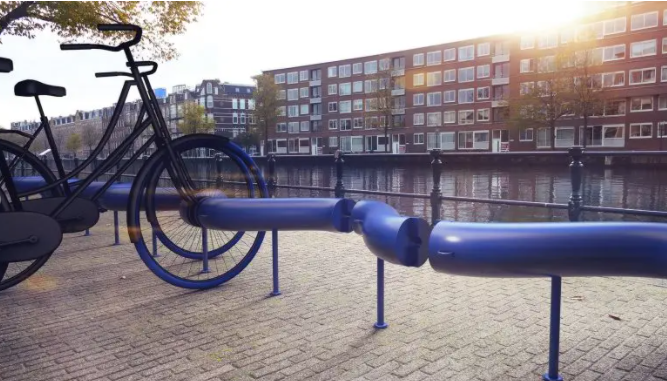Bicycling and Renewable Energy

It’s a proposal that’s based on Amsterdam’s love for cycling; 68% commute to and from work or school done via bicycle, cranking out a total of 1.25 million miles. What if that kinetic energy (19.5 million watt-hours) could be stored in batteries and then introduced to the grid at the end of each day?
The proposal is called “S-Park,” because, as shown above, participants pick up and drop off their bikes in an S-shaped docking station. Proponents claim that this doesn’t require anyone in Amsterdam to change their routine–thousands are already biking and parking their bikes at home after work or school.
First, 19.5 million watt-hours sounds like a lot until we realize that means 19,000 KWhrs, which in the U.S., is worth about $2000. Does that justify all this stuff: the special wheels, the batteries (the cost plus the extra weight), the infrastructure?
But the main problem lies in physics rather than economics. If you take all that kinetic energy and store it, you’re not going anywhere. The chemical energy from the cycler’s muscles is converted into kinetic energy–because that’s what’s needed to make the bicycle move forward.
Also, picking up and dropping off bikes at a central location (to which the biker walks) isn’t a change in anyone’s routine??
There is a reason that this image above is an artist’s rendering and not a photograph, and I think we’ve just nailed it.
